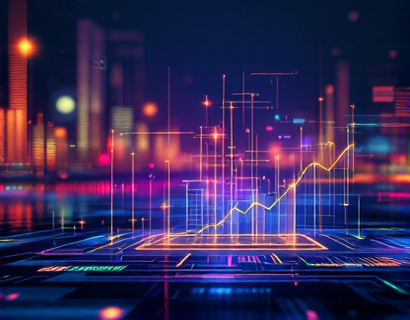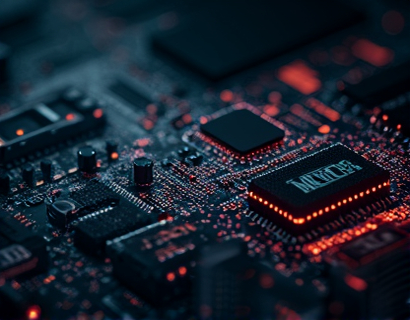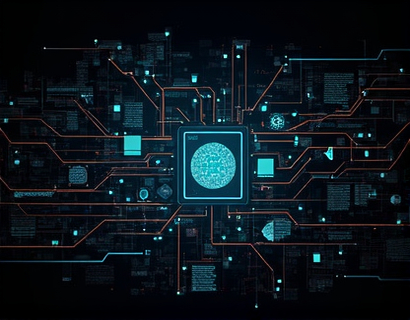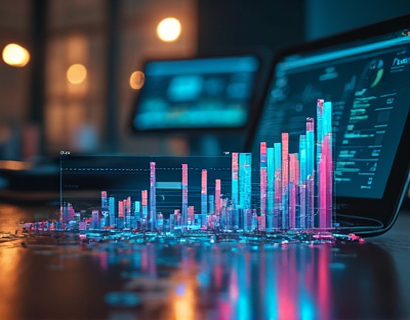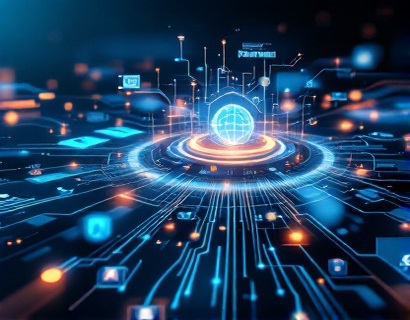Next-Gen Smart Contract AMMs: Revolutionizing DeFi Trading with Advanced Automation and Liquidity Management
The decentralized finance (DeFi) ecosystem has witnessed exponential growth, driven by innovative technologies and smart contract applications. Among these advancements, Automated Market Makers (AMMs) have emerged as a pivotal component, offering a decentralized alternative to traditional order books. Next-generation smart contract AMMs are redefining the landscape of DeFi trading by integrating advanced automation and sophisticated liquidity management. This article delves into the transformative impact of these technologies, exploring how they are enhancing the trading experience for crypto traders and DeFi enthusiasts.
Traditional AMMs rely on predefined formulas to determine asset prices and execute trades. However, next-gen AMMs leverage machine learning algorithms and real-time data analytics to dynamically adjust pricing and liquidity provision. This adaptive approach ensures that the AMM remains efficient and responsive to market conditions, minimizing slippage and improving trade execution.
One of the key features of advanced smart contract AMMs is their ability to optimize liquidity management. Liquidity providers (LPs) can now benefit from smart contracts that automatically rebalance pools based on market demand and volatility. This automation not only reduces the manual effort required to manage liquidity but also enhances the overall efficiency of the AMM. By dynamically adjusting liquidity allocations, these smart contracts ensure that the AMM remains deeply liquid, even during periods of high market stress.
Automated trading strategies are another cornerstone of next-gen AMMs. These strategies leverage smart contracts to execute trades based on predefined criteria, such as price thresholds, moving averages, and other technical indicators. The automation reduces the emotional bias in trading decisions, allowing for more consistent and disciplined trading practices. For instance, a smart contract can be programmed to automatically buy or sell assets when the price deviates from a certain level, executing these trades without human intervention.
The integration of advanced automation in AMMs also extends to risk management. Smart contracts can implement complex risk mitigation strategies, such as stop-loss orders and position sizing, directly within the trading logic. This level of automation ensures that traders can manage their risk exposure effectively, even in volatile markets. By automating these processes, next-gen AMMs provide a robust framework for traders to execute their strategies with greater precision and control.
Liquidity provision in DeFi has traditionally been a challenge due to the lack of incentives and the complexity of managing liquidity pools. Next-gen AMMs address these issues by offering dynamic incentive mechanisms that adjust based on market conditions. These mechanisms can include variable fee structures, token rewards, and other incentives that encourage liquidity provision during times of low liquidity. The smart contract ensures that these incentives are distributed fairly and efficiently, fostering a more robust and resilient liquidity ecosystem.
Another significant advantage of advanced smart contract AMMs is their interoperability with other DeFi protocols. These AMMs can seamlessly integrate with lending platforms, stablecoin protocols, and other decentralized applications, creating a cohesive and interconnected DeFi ecosystem. This interoperability allows traders to leverage multiple protocols within a single trading strategy, enhancing the flexibility and potential returns of their investments.
The use of advanced data analytics in next-gen AMMs is revolutionizing how market trends are analyzed and predicted. By incorporating real-time market data and historical price patterns, these AMMs can provide traders with valuable insights into market movements. Smart contracts can process this data to identify trends, predict price reversals, and suggest optimal trading entries and exits. This data-driven approach empowers traders to make more informed decisions, reducing the uncertainty associated with DeFi trading.
Security is a paramount concern in the DeFi space, and next-gen smart contract AMMs are designed with robust security features to protect user assets. These AMMs employ formal verification techniques to ensure that smart contracts function as intended, minimizing the risk of bugs and vulnerabilities. Additionally, multi-signature wallets and decentralized governance models are implemented to enhance the security and transparency of the platform. Users can have greater confidence in the safety of their assets, knowing that multiple layers of security are in place.
The user interface and experience (UI/UX) of next-gen AMMs have also seen significant improvements. These platforms are designed to be user-friendly, with intuitive dashboards and streamlined trading workflows. Traders can easily monitor their positions, view real-time market data, and execute trades with minimal friction. The focus on user experience ensures that both novice and experienced traders can navigate the platform with ease, enhancing overall satisfaction and adoption.
Scalability is another critical aspect of next-gen AMMs. As the DeFi ecosystem continues to grow, the ability to handle increasing transaction volumes without compromising performance is essential. Advanced smart contract AMMs are built on scalable blockchain solutions, such as Ethereum 2.0 and layer 2 protocols, to ensure high throughput and low transaction fees. This scalability allows the platform to accommodate a large number of users and trades, maintaining optimal performance even during peak usage periods.
The environmental impact of DeFi trading is an area of growing concern, and next-gen AMMs are addressing this by incorporating eco-friendly solutions. By leveraging blockchain networks with lower energy consumption, these AMMs reduce the carbon footprint associated with trading activities. Additionally, some platforms are exploring the use of carbon offset programs and sustainable finance initiatives to further minimize their environmental impact.
In conclusion, next-gen smart contract AMMs are transforming the DeFi trading landscape through advanced automation, sophisticated liquidity management, and innovative features. These technologies not only enhance the trading experience for crypto traders and DeFi enthusiasts but also contribute to the overall stability and growth of the DeFi ecosystem. As the technology continues to evolve, we can expect even more sophisticated and user-friendly AMMs that will further democratize access to decentralized finance.



